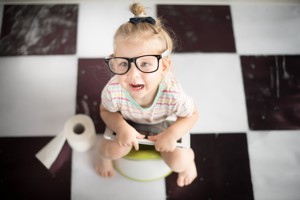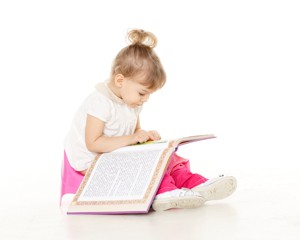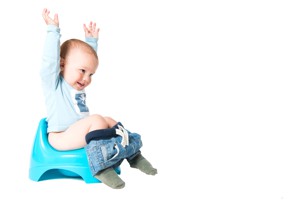 One of the biggest milestones in your child’s early years is learning how to use the potty and toilet. It marks the end of toddlerhood and is a sign that your little one is growing up ready to start school in the not so distance future.
One of the biggest milestones in your child’s early years is learning how to use the potty and toilet. It marks the end of toddlerhood and is a sign that your little one is growing up ready to start school in the not so distance future.
As we so often repeat on Mumblog, every child is different, and whilst some children may master using the potty in a handful of days, for others it can take longer, and what works for one child may not necessarily work for another. There are various methods you can use to toilet train your child, and it’s important that you choose the method that works best for your family.
When To Start Potty Training
Patience is key for potty training. There may be days when it feels as though you are continuously changing your child’s soiled clothes or washing the carpet. Which is why we recommend that in addition to making sure that your child is ready to be trained, you are ready as well. If you are struggling with a stressful time at work, having difficulties in your personal relationships, or exhausted with a second pregnancy or newborn, then it may not be the best time to begin potty training your toddler. That’s because your toddler may pick up on any additional stress you have over his or her accidents and become stressed about it themselves.
In addition, if you don’t have any extra pressures to deal with, you also need to consider timing. For example, do you really want to start potty training when you have a cross-country trip to the grandparents coming up? Or several days of extra-long shifts at work? Many parents recommend that you set aside a week where you have nothing planned to start potty training, taking annual leave from work if necessary. You may also find it easier to train in the summer, when your child can spend lots of time playing in the garden, reducing the amount of accidents you need to clean up in your house!
Is My Child Ready For Potty Training?
 It’s thought that the average age to begin potty training is between two and three years old, though some start earlier and some start later. For most children, even once they have been potty trained, accidents during the day will continue to happen until they are around four-years oldwith accidents during the night continuing for many children past the age of five.
It’s thought that the average age to begin potty training is between two and three years old, though some start earlier and some start later. For most children, even once they have been potty trained, accidents during the day will continue to happen until they are around four-years oldwith accidents during the night continuing for many children past the age of five.
If your child has an older sibling, or attends a childcare setting with older children, they may show an interest in being trained as a result of watching their siblings / peers use the toilet. This doesn’t necessarily mean that they have the full bladder and bowel control required, and if that is the case, you can still encourage their enthusiasm by offering them the potty at certain times, for example, in the morning or at bedtime.
If there is less than an hour between the times that your child is urinating, then it is unlikely that your child is ready to be trained. However, if your child is able to go for an hour or longer between urinating, then this is a good sign that he or she has the necessary bladder control required. Your child may also tell you that he or she needs a wee beforehand, and whilst this may immediately be followed by them urinating with no time to get to the potty, this is another important sign that your child is aware of their bladder’s functions and that they are ready to start training.
With regards to bowel movements, your child may begin to have one at a regular time of day, as well as take themselves off to a particular spot in the house before having one. These are both signs that your child is ready to start training.
How To Start Potty Training
You can begin potty training by first getting your child used to the idea of people using the toilet. Talk to them about where wee and poo comes from, and let them see you use the toilet (get used to having an audience!). That way your child will learn that these are all normal and healthy bodily functions.
There are also a number of books aimed at young toddlers about using the potty, such as Pirate Pete’s Potty by Andrea Pinnington, which tell stories about young children learning to use the potty.
Choose A Potty
Next, choose a potty. It’s not as easy as it sounds given that there are so many designs to choose from. Look for something that is sturdy, so your child can’t easily fall off, and something that is easy to clean. We particularly like those that have a separate inner section that holds the wee / poo that can be removed from the main potty in order to pour down the toilet, as it’s not always easy to pour from an all-in-one design. Other potties are brightly coloured with designs that appeal to children.
Some parents choose to miss the potty stage all together and simply teach their child how to use the toilet. This means that you don’t have to worry about cleaning up messy potties or having the space in the bathroom to store a potty. On the other hand, if your only toilet is upstairs your child may struggle to reach it in time, possibly leading to more accidents. If you do decide to train this way, we recommend getting a toilet training seat to make your child feel more secure on the toilet, as a normal toilet seat will probably be too big and your child may feel like they are falling into the bowl. In addition, you will need a step to help your child reach the seat, and this can also be used as a step for the sink for washing hands.
Buy Underwear
Take your child out to buy some “big boy / girl” pants and let them choose the designs, so that they are excited about wanting to transition out of nappies. Whilst you can switch from nappies to pull-ups, many parents report that their children find this confusing, as they are too similar to nappies and don’t give the same sensation of being wet when accidents happen. However, pull-ups are useful when you are training and need to pop out somewhere.
Next Steps
 Explain to the child what the potty is for, and leave it somewhere where it is always accessible to them. Encourage your child to try sitting on the potty, even if they don’t do anything, but don’t force them and back off if they refuse, you can always try again the next day, perhaps by offering a reward.
Explain to the child what the potty is for, and leave it somewhere where it is always accessible to them. Encourage your child to try sitting on the potty, even if they don’t do anything, but don’t force them and back off if they refuse, you can always try again the next day, perhaps by offering a reward.
You could then choose to go cold turkey, explaining that to your child that he or she no longer needs nappies during the day (don’t worry about night time potty training until your child is dry during the day) and will only be wearing pants instead. Be prepared for a lot of accidents in the first few days if you try this method. Don’t scold your child if they do have an accident; Instead, you could point out how much nicer it would be if they went in the potty, rather than in their clothes. Encourage your child to sit on the potty every hour or so for the first few days.
Alternatively, you could try a softer approach, by placing your child on the potty before bedtime at first, or first thing in the morning, and then after they have had a wet or dirty nappy, getting them used to the idea, before moving on to spend a couple of hours a day without a nappy.
You can also try and get your child to sit on the potty around 20-minutes after mealtimes, as this is when he or she is most likely to need to do a poo. If your child makes grunting noises when trying to do a poo, you could look out for these and try and get them to sit on the potty quickly.
How Long Will It Take To Potty Train My Child?
Some children will be dry in under a week, others may take several weeks or months. Even once your child is trained, you can still expect the odd accident every now and again. For more information, read our article Potty Training Tips.
